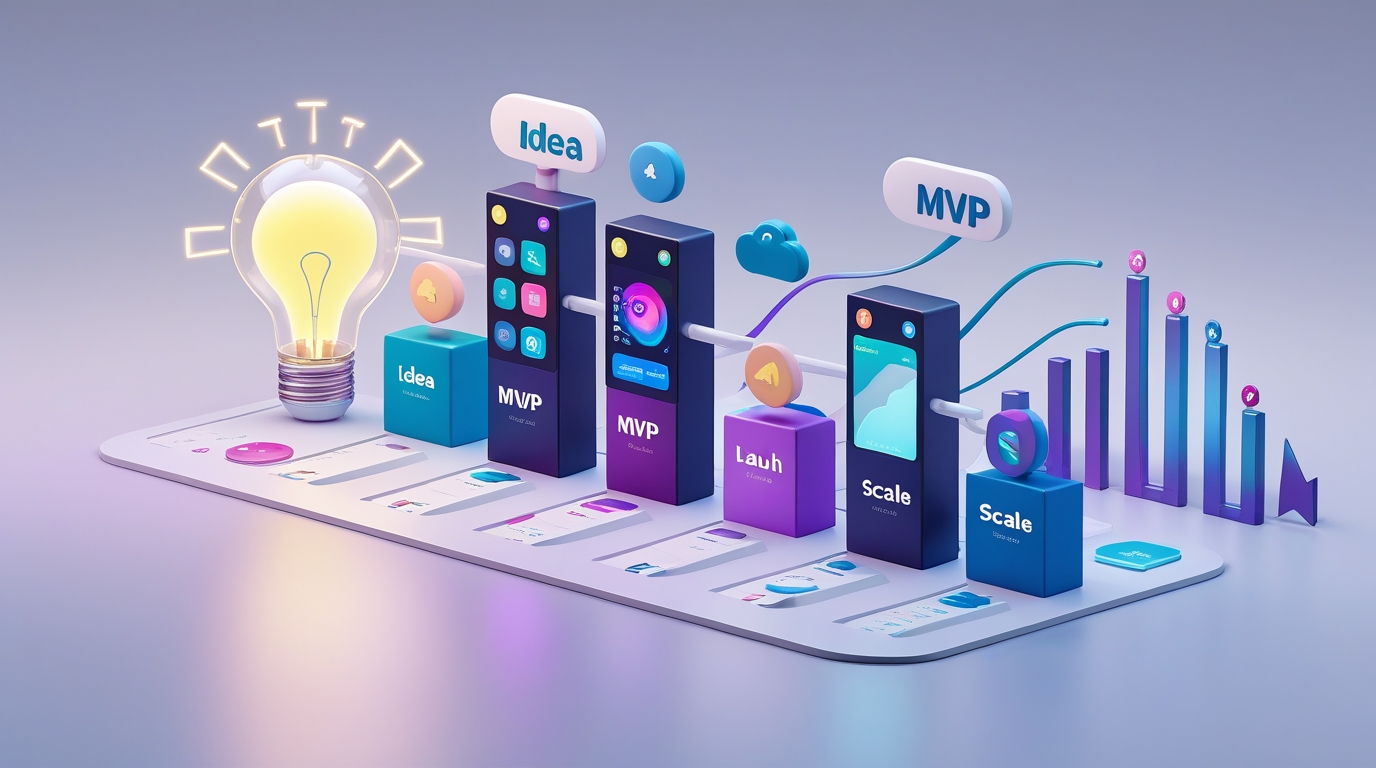The banking industry is transforming digitally, with customers demanding instant, personalized, and accessible services. Traditional marketing approaches, such as print ads or in-branch promotions, are no longer enough to meet these expectations. This article explores Digital Marketing in Banking Industry, offering actionable strategies to help banks succeed in 2025. From foundational concepts to advanced trends, we cover how banks can leverage digital channels, the role of a bank digital marketing agency, and the growth of the digital banking market and platforms.
Understanding Digital Marketing in Banking Industry
Digital Marketing in Banking Industry refers to the use of online channels and technologies to promote financial products and services, engage with customers, and drive business growth. Unlike traditional marketing, which relies on physical media, digital marketing leverages platforms like social media, search engines, email, and mobile apps to reach customers where they are most active. The goal is to deliver relevant, timely information that addresses customers’ financial needs, fostering trust and loyalty.
Why is Digital Marketing in Banking Industry Crucial?
The rise of digital banking has reshaped customer expectations underscoring the shift toward digital services, making digital marketing essential for banks to remain competitive. Benefits include:
- Enhanced Visibility:
Digital channels increase brand awareness online.
- Customer Acquisition:
Targeted campaigns attract new clients.
- Customer Retention:
Personalized communication fosters loyalty.
- 24/7 Accessibility:
Online platforms provide constant access to services.
- Data Insights:
Analytics enable data-driven decision-making.
- Cost Efficiency:
Digital marketing often costs less than traditional methods.
As customers increasingly rely on mobile apps and online banking, banks must adopt robust digital marketing strategies to meet these demands and stay ahead of competitors, including fintech startups.
Key Digital Marketing Strategies for Banks
To thrive in 2025, banks should implement a mix of digital marketing strategies tailored to their audience and goals. Below are the most effective approaches, supported by industry insights.
Social Media Marketing
Social media platforms are vital for connecting with customers in real-time. Banks can use LinkedIn for professional networking, Instagram for visual storytelling, and X for quick updates. Strategies include sharing financial tips, promoting products, and responding to customer inquiries. For example, a bank might run a campaign on Instagram highlighting its mobile banking app, using engaging visuals to drive downloads.
Content Marketing
Content marketing involves creating valuable, educational content to establish banks as trusted authorities. Blogs on topics like “How to Save for Retirement” or videos explaining loan options can attract and retain customers. Webinars and infographics further enhance engagement by addressing customer pain points. High-quality content also supports SEO efforts, driving organic traffic to bank websites. For instance, a blog optimized for keywords like “digital banking” can rank higher on Google, attracting potential clients.
Search Engine Optimization (SEO)
SEO ensures that a bank’s website and content appear prominently in search engine results. By targeting keywords such as “online banking” or “bank digital marketing agency,” banks can attract users actively seeking financial services. SEO involves optimizing website structure, creating keyword-rich content, and earning backlinks from reputable sites. A well-optimized site not only drives traffic but also enhances user experience, as fast-loading, easy-to-navigate pages are favored by search engines and customers alike.
Email Marketing
Email marketing remains a powerful tool for personalized communication. Banks can segment their audience based on demographics or behavior, sending tailored offers, account updates, or financial advice. For example, a customer who frequently uses mobile banking might receive an email about new app features. Segmentation and personalization increase open rates and conversions, making email a cost-effective strategy for customer retention and engagement.
Pay-Per-Click (PPC) Advertising
PPC advertising allows banks to target specific keywords, appearing at the top of search results. This is ideal for capturing high-intent customers searching for terms like “best savings account” or “digital banking platforms.” While PPC can be costly in competitive markets, careful budget management and performance tracking ensure a strong return on investment. Banks can also use retargeting ads to re-engage visitors who didn’t convert initially.
Read more : SEO for financial Advisors
Influencer Marketing
Partnering with financial influencers or industry experts can expand a bank’s reach, particularly among younger audiences. Influencers can share authentic content, such as reviews of banking services or financial tips, building trust and credibility. For example, a fintech influencer might promote a bank’s digital wallet on YouTube, driving sign-ups.
Mobile Marketing
With smartphones driving digital banking adoption, mobile marketing is non-negotiable. Banks must optimize websites for mobile devices, ensuring fast load times and intuitive navigation. Mobile apps offering features like bill payments, fund transfers, and budgeting tools enhance customer experience. SMS alerts and push notifications keep customers informed about account activities or promotions.
Below is a concise table summarizing key Digital Marketing in Banking Industry strategies, highlighting their benefits and practical applications:
| Strategy | Key Benefits | Example Application |
| Social Media Marketing | Real-time engagement, community building | Instagram campaign for mobile app downloads |
| Content Marketing | Builds trust, drives organic traffic | Blog on budgeting tips |
| SEO | Increases search visibility | Optimizing for “online banking” |
| Email Marketing | Personalized, cost-effective | Tailored offers based on transaction history |
| PPC Advertising | Targets high-intent customers | Ads for “best savings account” |
| Influencer Marketing | Expands reach, builds credibility | YouTube review by a fintech influencer |
| Mobile Marketing | Enhances accessibility, user experience | Mobile app with budgeting tools |
The Role of a Bank Digital Marketing Agency
Navigating the complexities of Digital Marketing in Banking Industry requires specialized expertise. A Bank digital marketing agency provides tailored solutions, helping banks achieve their marketing goals while adhering to strict financial regulations. These agencies offer services such as:
- Strategy Development:
Creating comprehensive digital marketing plans aligned with bank objectives.
- Social Media Management:
Running campaigns and engaging audiences across platforms.
- Content Creation:
Producing SEO-optimized blogs, videos, and infographics.
- PPC and SEO:
Managing ad campaigns and improving search rankings.
- Website and App Development:
Designing user-friendly digital interfaces.
That’s where web portal development services become essential — enabling banks to build secure, interactive platforms that streamline everything from account access to personalized dashboards.
- Data Analytics:
Analyzing campaign performance to refine strategies.
By partnering with a bank digital marketing agency, banks can focus on core operations while leveraging expert knowledge to enhance their online presence. These agencies understand the need for compliance, ensuring that marketing efforts align with regulations like GDPR or CCPA, and prioritize trust-building to maintain customer confidence.
Digital Banking Market Size and Growth
The digital banking market is experiencing significant growth, driven by technological advancements and changing consumer preferences. According to Business Research Insights, the global digital banking market was valued at USD 15.94 billion in 2024 and is projected to reach USD 72.9 billion by 2033, growing at a CAGR of 18.6%. Key drivers include:
- Smartphone Penetration: Widespread smartphone adoption globally is a significant factor driving the increasing use of mobile banking.
- Demand for Convenience: Customers prefer 24/7 access to banking services.
- Financial Inclusion: Digital platforms reach underserved populations.
- Fintech Innovation: Startups challenge traditional banks, pushing digital transformation.
This growth reflects the increasing reliance on digital channels, making Digital Marketing in Banking Industry a critical tool to capture market share and engage customers.
Digital Banking Platforms Market
Digital banking platforms are the technological backbone of digital banking, enabling banks to deliver services through online and mobile channels. These platforms support features like account management, fund transfers, bill payments, loan applications, and customer support via chatbots. The market for these platforms is expanding rapidly, with Grand View Research estimating a value of USD 28.2 billion in 2022, projected to reach USD 107.1 billion by 2030 at a CAGR of 20.5%.
| Metric | Value |
| Market Size 2022 | USD 28.2 billion |
| Revenue Forecast 2030 | USD 107.1 billion |
| CAGR 2022-2030 | 20.5% |
Key Growth Drivers:
- Increased smartphone and internet penetration.
- Shift to digital platforms for cost efficiency and productivity.
- Growth in cloud computing and AI integration.
- COVID-19-driven surge in online banking adoption.
The competitive landscape includes traditional banks and fintech seo agency, with innovations like AI, machine learning, and blockchain-enhancing platform capabilities. For example, AI-powered chatbots provide instant customer support, while blockchain ensures secure transactions.
Future Trends in Digital Marketing in Banking Industry
As digital marketing evolves, several trends are poised to shape the banking industry in 2025 and beyond:
- Personalization:
Using AI and data analytics to deliver tailored marketing messages, such as customized loan offers based on customer behavior.
- Omnichannel Experience:
Ensuring seamless interactions across social media, apps, and websites for a cohesive customer journey.
Optimizing content for voice assistants like Alexa, as customers use them for banking queries.
- Video Content:
Leveraging live streams, tutorials, and testimonials to engage audiences, as video consumption grows.
- Chatbots and AI:
Implementing AI-driven assistants for 24/7 customer support, improving response times and satisfaction.
- Regulatory Compliance:
Adhering to data privacy laws and financial regulations in all marketing activities.
- Sustainability Marketing:
Highlighting environmental, social, and governance (ESG) initiatives to appeal to socially conscious consumers.
For banks aiming to implement these technologies efficiently, offshore web development services can provide scalable, cost-effective solutions without compromising on security or performance.
These trends reflect the industry’s focus on technology-driven, customer-centric marketing, with an emphasis on trust and compliance.
Conclusion
Digital Marketing in Banking Industry is a powerful tool for engaging customers, driving growth, and staying competitive in a digital-first world. Strategies like social media, content marketing, and SEO, supported by a bank digital marketing agency, enable banks to connect with tech-savvy audiences. The rapid growth of the digital banking market (USD 72.9 billion by 2033) and digital banking platforms market (USD 107.1 billion by 2030) underscores the importance of these efforts. By embracing emerging trends like personalization and AI, banks can build stronger relationships with customers and thrive in 2025 and beyond.
What are your thoughts on digital banking marketing? Let’s discuss this—drop a comment below!
FAQ
- What is Digital Marketing in Banking Industry?
Digital Marketing in Banking Industry uses online channels to promote financial products, engage customers, and drive growth, including social media, SEO, and email.
- Why is digital marketing important for banks?
It increases visibility, attracts and retains customers, provides 24/7 access, and reduces costs, helping banks compete in a digital landscape.
- What services does a bank digital marketing agency offer?
It provides strategy development, social media management, content creation, SEO, PPC, website development, and data analytics, tailored for banking.
- What is the size of the digital banking market?
The market is projected to reach USD 72.9 billion by 2033, growing at a CAGR of 18.6% from 2024, per Business Research Insights.
- What are digital banking platforms, and why are they important?
Digital banking platforms are the underlying technology enabling online and mobile financial services. They are crucial for providing convenient customer access and efficient banking operations worldwide.
- What are the top digital marketing trends for banks in 2025?
Trends include personalization, omnichannel experiences, voice search optimization, video content, AI chatbots, regulatory compliance, and sustainability marketing.







